New Zealand rescue workers are
evacuating scores of tourists and residents from the town hardest hit by
a series of powerful earthquakes.
Four air force helicopters are now airlifting people out of Kaikoura on the South Island after battling strong winds and heavy rain earlier.The town, northeast of Christchurch, has been cut off by quake-triggered landslides.
Hundreds of aftershocks have rocked the area as well.
The capital Wellington on the North Island continues to see severe weather on Tuesday with heavy rain and flooding.
Two people were killed in the 7.5 magnitude earthquake that struck the South Island early on Monday.
Air Commander Darryn Webb, the acting commander of New Zealand joint forces, told TVNZ that they are airlifting approximately 200 people out of Kaikoura on Tuesday.
There are an estimated 1,200 tourists at the popular whale-watching spot, which has a population of about 2,000.
Two ships and other aircraft are assisting with the evacuations as well, said the New Zealand Defence Force. Prime Minister John Key said the top priority was to provide desperately-needed supplies to Kaikoura.
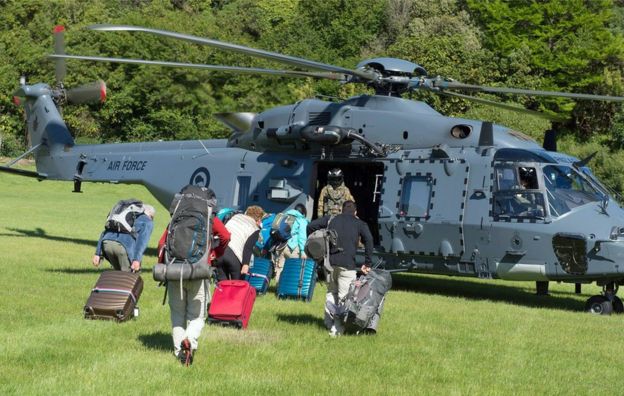
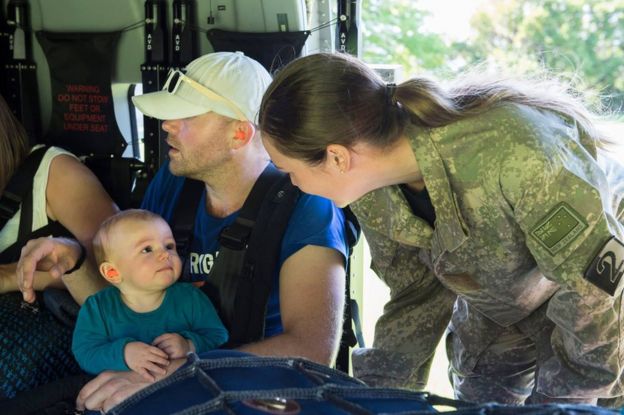
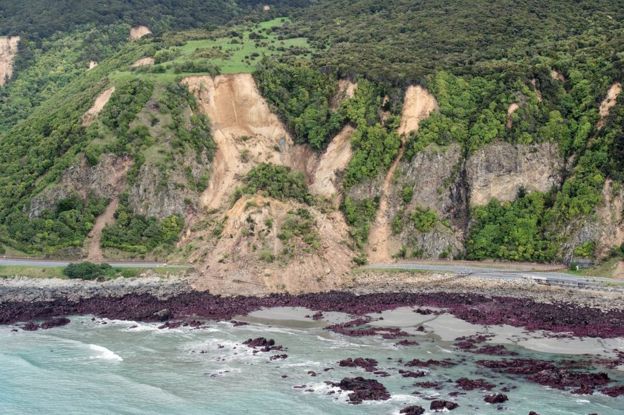
At least 1,000 are housed in the local marae, or Maori meeting place, and had crayfish - the town's specialty - for breakfast on Tuesday, after local fisheries' tanks failed with the electricity shortage, reported Reuters.
Local divers and fishermen are also reportedly working to relocate tens of thousands of paua - a type of mollusc - and crayfish back to the sea after the seabed rose out of the water by around 2m (6.6 ft).
Transport Minister Simon Bridges told reporters on Tuesday that road and rail access to Kaikoura will take "several months".
Officials who have begun assessing the aftermath say billions of dollars of damage was caused, with major road and rail links severed.
GeoNet, a government-funded project monitoring earthquakes, said that aftershocks would continue over the next few months.
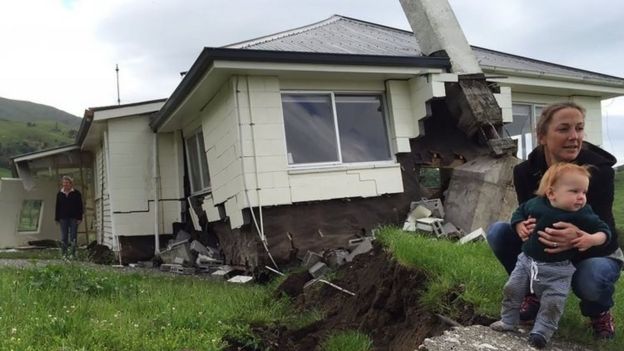
Heavy rain and winds have shut down some highways and rail lines, closed some schools and caused electricity outages and flooding.
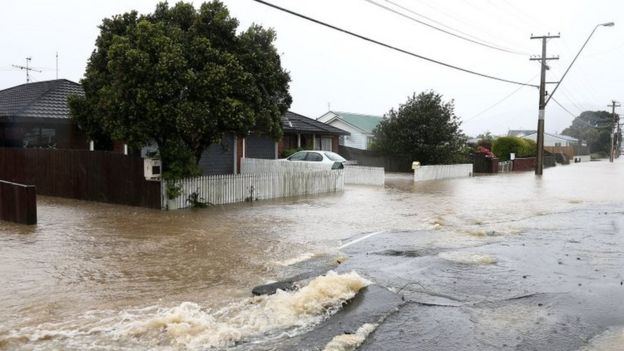
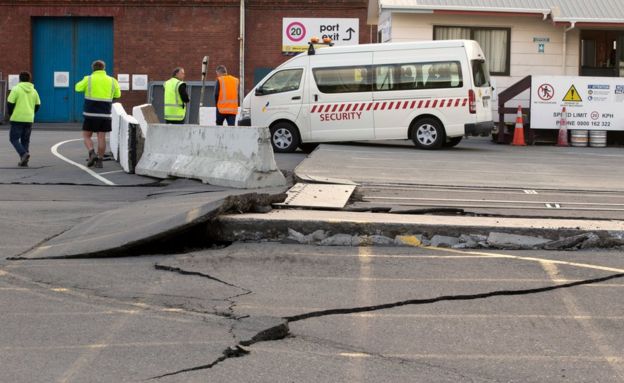
Waves of around 2m (6.6ft) hit the coast shortly afterwards, and the tsunami alert was later lifted.
On Monday Clarence River, which was dammed up by a landslide, burst its banks prompting another warning to those living in the area.
Residents in Christchurch and surrounding towns have rushed to stock up on basic supplies, and some schools remain closed, amid aftershocks.
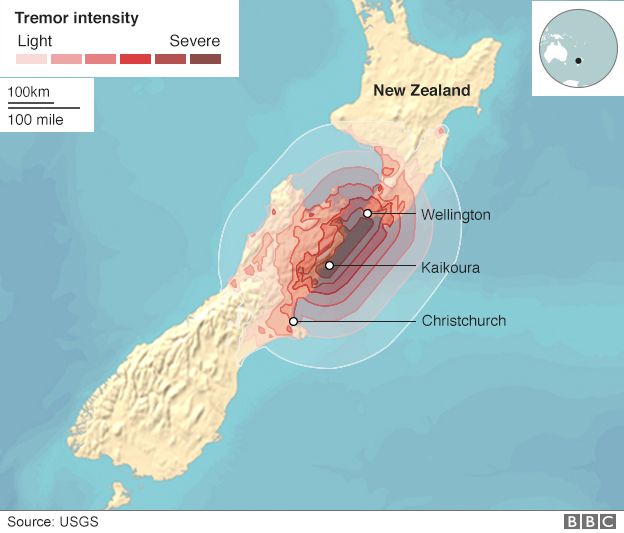
Another woman died near Mount Lyford.
One expert told TVNZ that the low number of fatalities may have been due to the fact that the first quake struck in the middle of the night.
"People were safe in their homes, homes might get damaged but they're safer for the people inside," said Ken Elwood from the University of Auckland.


The US Geological Survey said Monday's quake had a magnitude of 7.8, while GeoNet put it at 7.5.
New Zealand lies on the Ring of Fire, the fault line that circles virtually the entire Pacific Rim bringing frequent quakes and volcanic eruptions.
Christchurch is still recovering from a 2011 earthquake that killed 185 people and destroyed the city centre.

http://www.bbc.com/news/world-asia-37982395








No comments :
Post a Comment